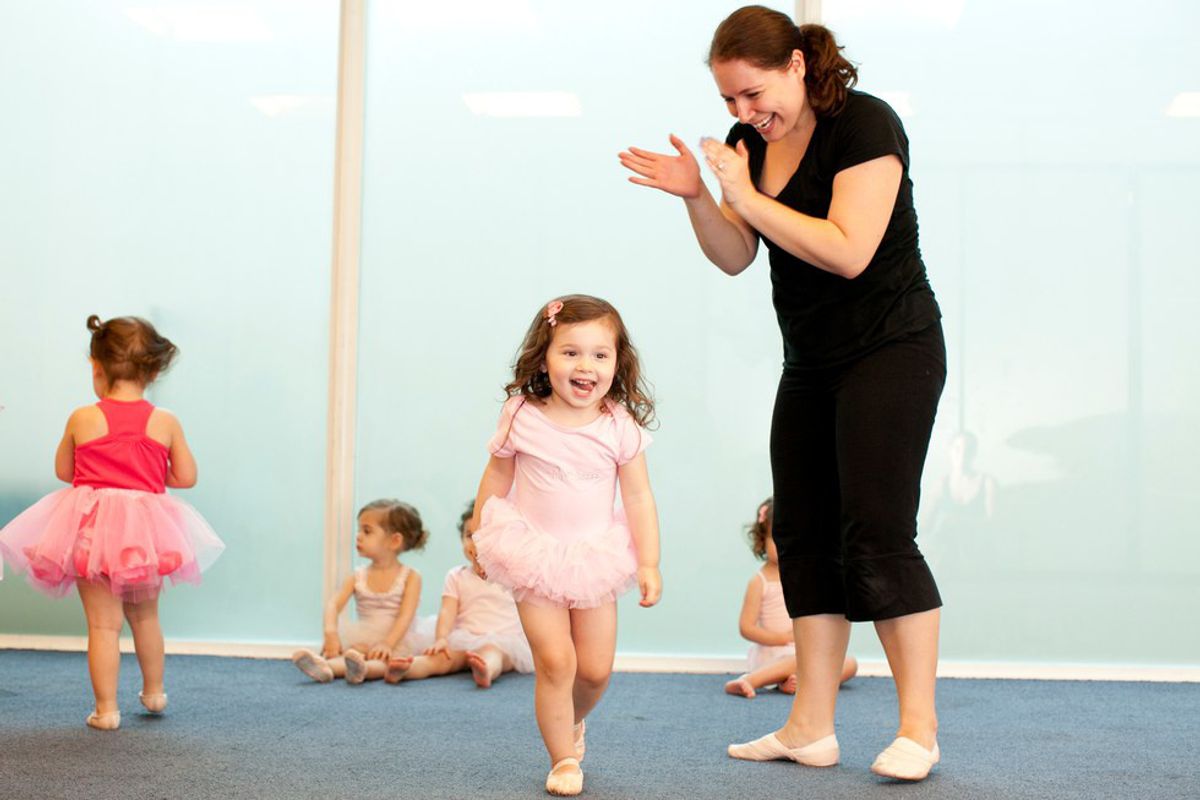
When a principal, teacher, or parent walks into a room and sees 20 children rolling around on the floor and then leaping for the sky (learning about level changes), or jumping about like frogs (in a role-playing improvisation activity), they might not always understand what’s going on. That’s why Deborah Damast, clinical assistant professor and artistic advisor of the dance education program at NYU Steinhardt, offered up several responses as to why this type of movement—often a precursor to formal ballet/tap/jazz classes—is so very important.
While Damast has a lot of helpful practical advice to share about ideas and classroom management, one of our initial topics of discussion had to do with why creative movement matters:
– Focusing the mind
– Creating community
– Assisting with children’s cognitive and motor skill development
– Preparing muscles and joints for later activity
– Developing aerobic capacity and impulse control
– Introducing movement themes and body awareness
– Building vocabulary and literacy, as well as problem-solving skills
– Increasing interpersonal skills
– Acting as an expressive outlet
– Introducing and instilling class rules and etiquette
– Helping develop strength and flexibility
– Helping schools meet arts enrichment requirements
If needed, warm-up exercises can be developed into choreography for showings, performances, or lecture/demonstrations. A few activities Damast suggested (and that have been tested out by my classmates and I to great amusement):
The Name Game: The class stands in a large circle. One person does a movement and says their name while performing it. The class mimics it, and then each student following adds their name on as a tag. By the time you’ve made it around the circle, the class has performed and said everyone’s name. Once you are able to do the whole circle from memory, try repeating the exercise without talking. Not only do you get warmed up, but you learn all of your classmates names in the process.
Animal Alphabet: From A to Z, come up with animals and movements that correspond with them. Perform different level changes and movement qualities with them. This is also a chance to introduce some unusual animals as well, to make sure all the letters are covered. (In case you’re curious, Damast uses a newt for N, vulture for V, X-ray fish for X, and a yak for Y. You can only imagine what types of movements might go with those!)
Skipping Dance: Again in a circle, one child is the “leader.” Keep track with the attendance list so everyone gets a chance. The leader skips—kind of like Duck, Duck, Goose—tapping classmates on their head who then join the leader skipping and tapping other dancers who are quietly sitting and waiting. You can only skip if you get tapped; if you get tired, you can sit back down, but have to wait to get tapped again to start moving.
Color Dance: Use construction paper and associate the colors with different movement ideas. For example, red might mean the floor is burning hot; yellow might mean reaching for the sun; black might mean freeze. As the students begin to associate the corresponding movements easily, you can start switching in Language of Dance symbols in to help them build their dance vocabulary.
So the next time someone questions you about what you are doing with your students or why their child needs to be enrolled in creative movement, you now have several different reasons to illustrate its importance. And don’t forget—creative movement certainly isn’t limited to tiny tots—it can be done by anyone of any age.



